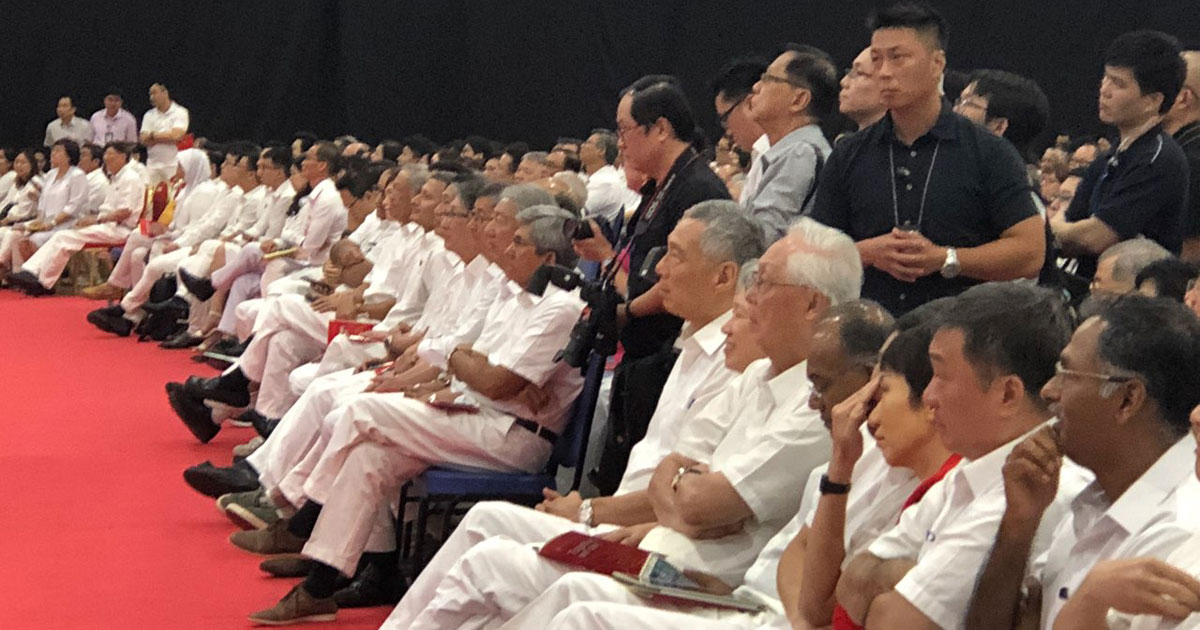Some 2,000 PAP cadre members held their internal election for the party's Central Executive Committee (CEC) on Nov. 11 at the Singapore Expo.
The party conference was over fairly quickly by afternoon, but the implications of what went down will be felt in time to come.
Here's how.
More 4G than 3G leaders
For the first time, the party's CEC counted more members from the "4th-Generation" leadership than the "3rd-Generation".
Notable 3G heavyweights Khaw Boon Wan, Teo Chee Hean, Tharman Shanmugaratnam, Yaacob Ibrahim and Lim Swee Say stepped down from their CEC roles, making way for more 4G leaders.
Only K. Shanmugam, Gan Kim Yong and Lee Hsien Loong remain from the "old guard".
Vivian Balakrishnan is also seen as a 3G leader, although he is the same age as Heng Swee Keat, who is seen as a 4G leader.
Ng Eng Hen is another 3G leader, but he was co-opted into the CEC after only receiving either the 13th or 14th highest tally of votes.
The rest come from the 16 4G leaders who issued a public joint statement on party succession in January 2018, a sign of renewal within the ranks.
More gender diversity
There are now more women in the line-up, with three in the new-look CEC.
Ministers Grace Fu and Indranee Rajah were elected among the top 12 members.
Minister Josephine Teo received either the 13th or 14th highest number of votes, and was also co-opted into the CEC.
This is more than the previous CEC, which counted only two women -- Grace Fu and Halimah Yacob.
After resigning from the PAP to run for President, Halimah was replaced by Teo as a CEC member.
Ong Ye Kung's impressive showing
Among the new faces were Ng Chee Meng, Ong Ye Kung, and Indranee Rajah, who were all elected into the top 12.
It's a commendable feat for all three politicians.
Ng's strong performance was likely due to his position as the Labour Chief, which meant that he is likely to enjoy support from PAP cadre members who are part of the labour movement.
Indranee's long experience in politics could have also helped, having been first elected in 2001.
Hence, this makes Ong's election all the more impressive.
He has few links to the labour movement (he was NTUC's deputy secretary-general until he left in 2012); nor does he have the long experience of some fellow PAP members, having been first elected only in 2015 (and co-opted into the CEC as third organising secretary last year).
Yet, he still managed to garner enough votes to finish within the top 12, ahead of a more experienced politician like Ng Eng Hen.
Following the election, Ong posted on Facebook thanking the members and 3G leaders for their support:
The return of Tan Chuan-Jin
Another new face wasn't exactly new.
Speaker of Parliament Tan Chuan-Jin was elected as part of the 33rd CEC in 2014.
But he did not place within the top 12 in 2016, and was co-opted.
In 2017, Tan was appointed Speaker and left his previous role at the Ministry of Social and Family Development.
However, Tan has now garnered enough votes to finish within the top 12 once more, and will be a member of the 35th CEC.
Despite no longer having a role in Cabinet, Tan will have a say in the party's direction as it looks ahead to the next general election.
Next PM?
The biggest question on the minds of political nerds, randos and pundits observers must be: Does the election hold any clues to the identity of PM Lee's successor?
The three most common names touted for the top job -- Chan Chun Sing, Heng Swee Keat and Ong Ye Kung -- all received enough votes to place within the top 12.
As the vote count is secret, there's no way to tell who received the most number of votes.
But there could be another clue coming soon.
Following the departure of the 3G heavyweights, a number of roles within the party are now up for grabs:
- Chairman (formerly Khaw Boon Wan)
- Vice-Chairman (formerly Yaacob Ibrahim)
- 1st Assistant Secretary-General (formerly Teo Chee Hean)
- 2nd Assistant Secretary-General (formerly Tharman Shanmugaratnam)
- Treasurer (formerly Lim Swee Say)
The party's Assistant Treasurer, K. Shanmugam, was re-elected into the CEC, although it remains to be seen if he will stick with his current position.
If the front-runners receive new roles within the party, that might be a clue as to who is ahead in the race.
(Editor's note on Nov. 12, 2018: We've added some details to clarify Ong Ye Kung's past links to the labour movement, as well as his last-held role in the CEC.)
Related story:
Top image by Sulaiman Daud.
If you like what you read, follow us on Facebook, Instagram, Twitter and Telegram to get the latest updates.
